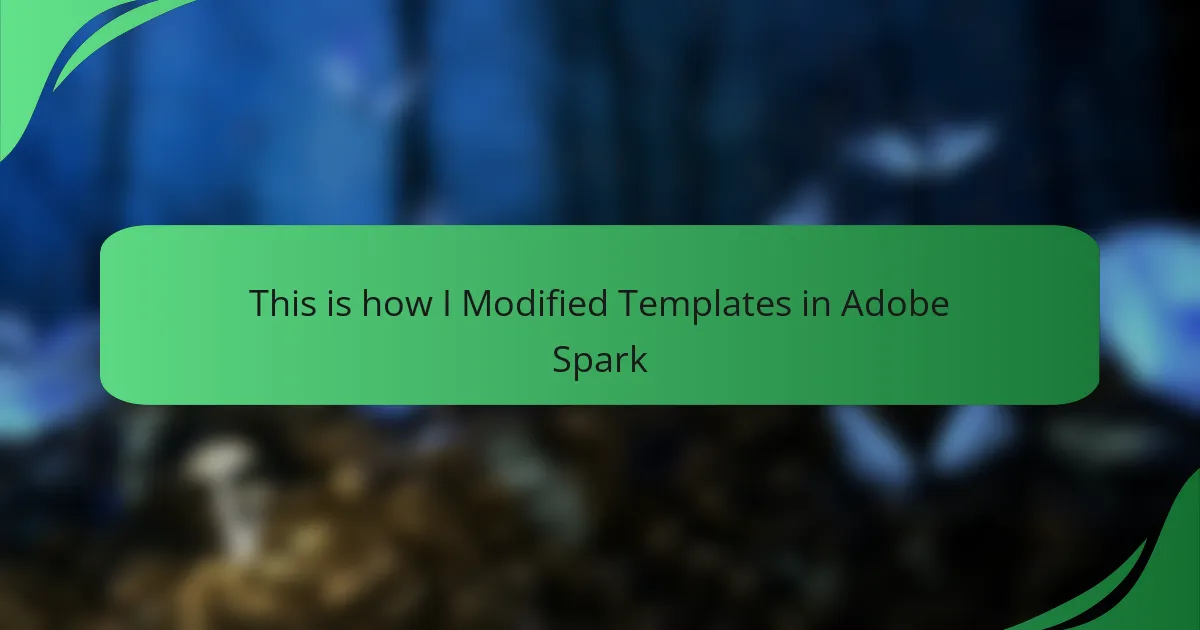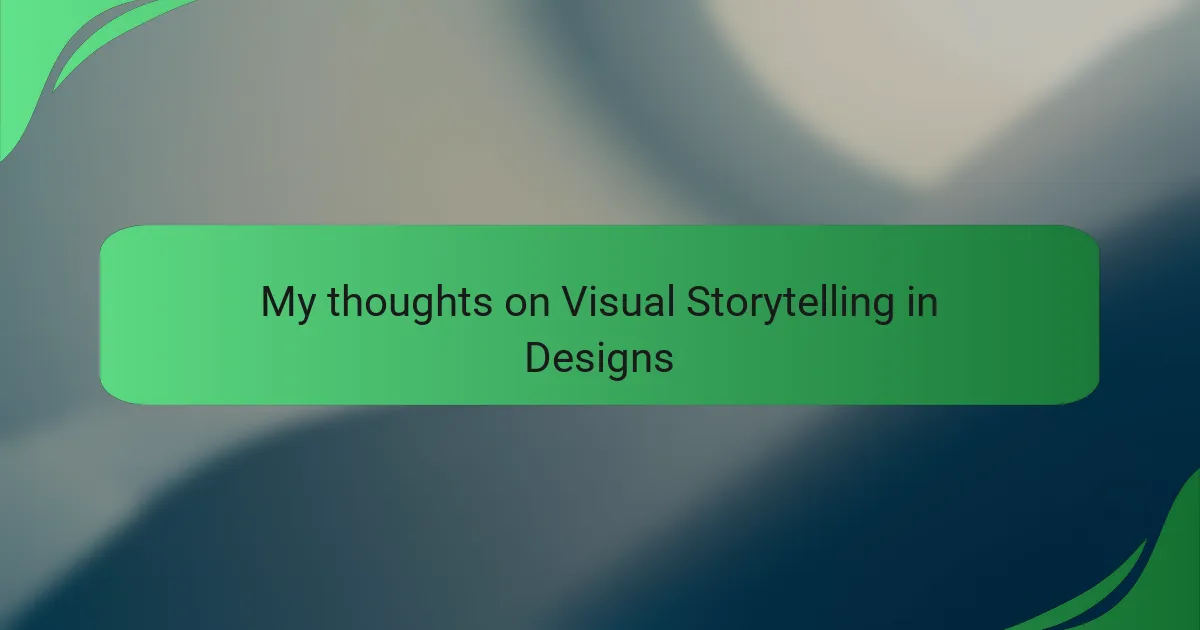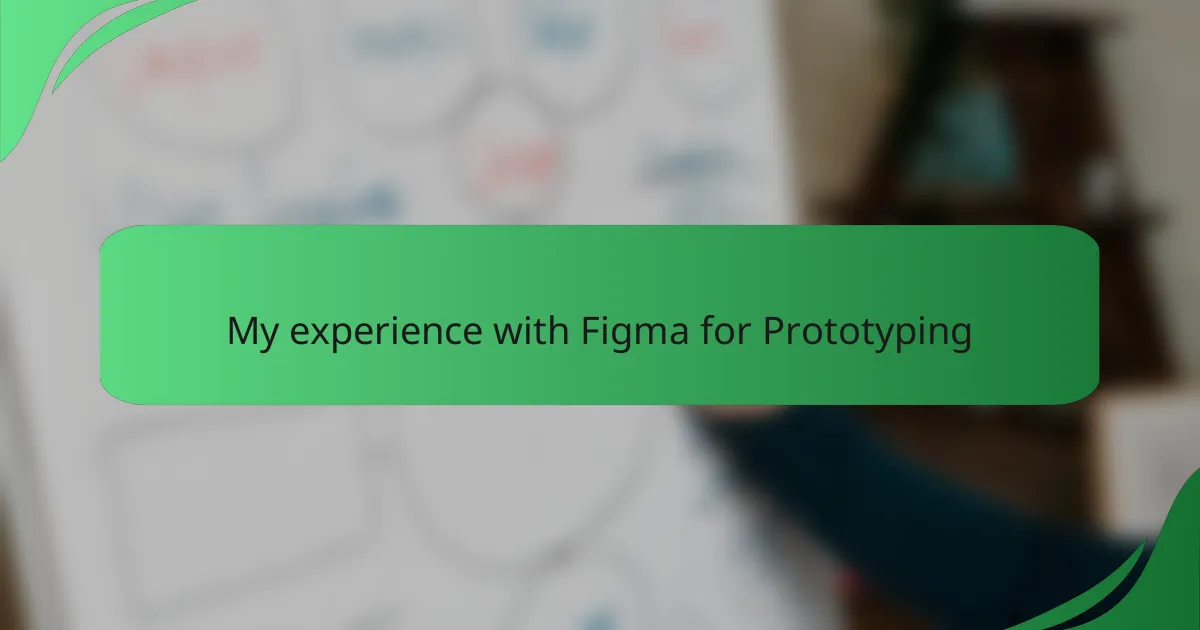Key takeaways
- Interface interaction design plays a crucial role in user experience, emphasizing the importance of intuitive design and emotional connection.
- Adobe Spark’s user-friendly features, including customizable templates and seamless integration with other Adobe products, enhance the design process for users of all skill levels.
- Simplicity, visual hierarchy, and maintaining brand consistency are key best practices for effective template modification in design.
- Sharing modified templates is easy with Adobe Spark, allowing for social media sharing, downloadable formats, and collaboration through shareable links.

Understanding interface interaction design
Interface interaction design is all about creating a seamless experience for users. I remember the first time I navigated a poorly designed app; it was frustrating! That experience made me realize just how crucial intuitive design is. Do users easily find what they seek? If not, the design fails its primary purpose.
When I think about interaction design, I see it as a bridge between technology and human behavior. It’s fascinating how a simple change in layout can drastically improve usability. I’ve often experimented with my designs, tweaking elements to see how they affect user engagement. It’s like a dance between aesthetics and functionality.
Another interesting aspect of interface interaction design is the emotional connection it can foster. I’ve noticed that when a design feels natural to use, users tend to feel more satisfied and even loyal to that product. Isn’t it remarkable how a thoughtful design can evoke such strong feelings? Understanding this is key to creating interfaces that resonate with users.

Key features of Adobe Spark
Adobe Spark is a versatile tool that I find incredibly user-friendly, especially for those of us who may not have a deep background in design. Its key features allow anyone to create stunning visuals quickly and effortlessly. The ability to customize templates stands out for me; I love how I can maintain a professional look while infusing my personal touch to each project.
One feature I particularly appreciate is the wide array of templates available, covering everything from social media graphics to presentations. This means I can start with a solid foundation and modify it to fit my specific needs. I vividly remember using Spark for a community event flyer; the ease of adjusting colors and fonts truly helped convey the vibrant spirit of the occasion.
Moreover, the integration with other Adobe products streamlines my workflow. For instance, I often use photos from Lightroom, which allows me to craft a cohesive visual style in my projects seamlessly. This synergy is something I genuinely value, making my design process feel not just efficient but also enjoyable.
| Feature | Description |
|---|---|
| Templates | Diverse and customizable, perfect for various projects. |
| User-Friendly Interface | Intuitive design makes it accessible for all skill levels. |
| Integration | Seamless connectivity with other Adobe tools for enhanced creativity. |
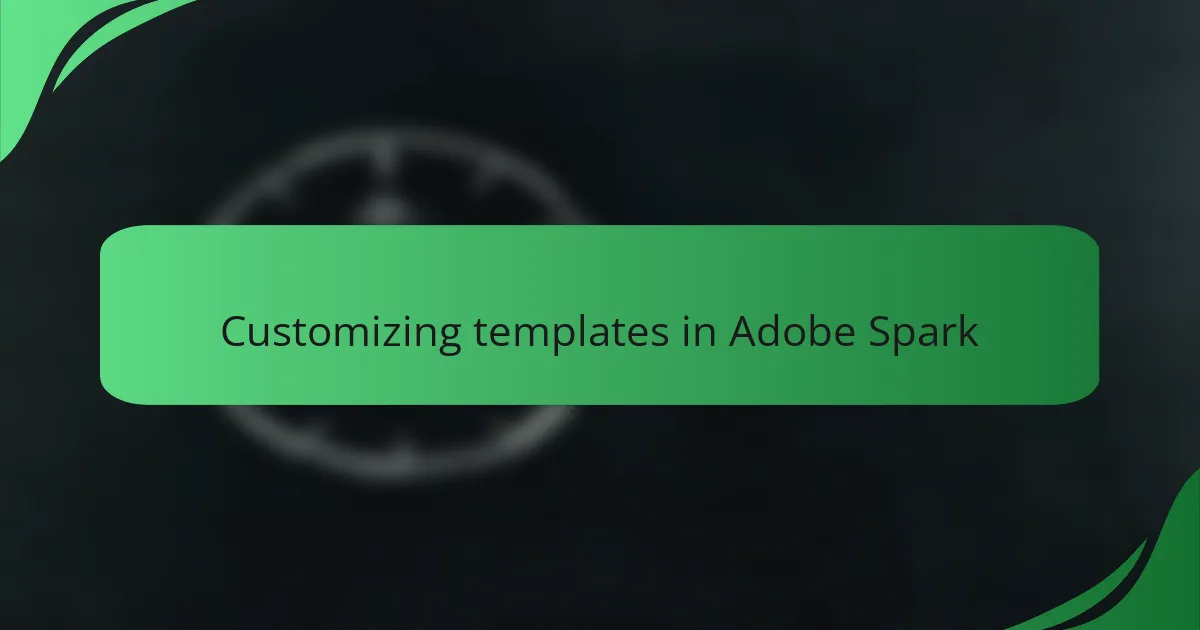
Customizing templates in Adobe Spark
Customizing templates in Adobe Spark is where the magic happens for me. I often start with a template that resonates with my vision, then make it my own. Adjusting colors, fonts, and layouts allows me to express my style while still maintaining a polished appearance. Have you ever felt more connected to a project simply because it reflects your personal taste? I certainly do.
One of my favorite techniques is layering images and text to create depth. I remember working on a presentation where I wanted to emphasize a central message. By customizing the template’s layout, I was able to draw attention exactly where it was needed. Subtle adjustments can have a powerful impact on how information is perceived, don’t you think?
Experimentation is key when modifying templates. Each time I play around with different elements, I discover something new that enhances my design. Like the time I combined different images that, at first glance, seemed unrelated. The result was a unique visual statement that truly captured the essence of my project. It’s exhilarating to see how much a simple customization can elevate the overall feel of my work!
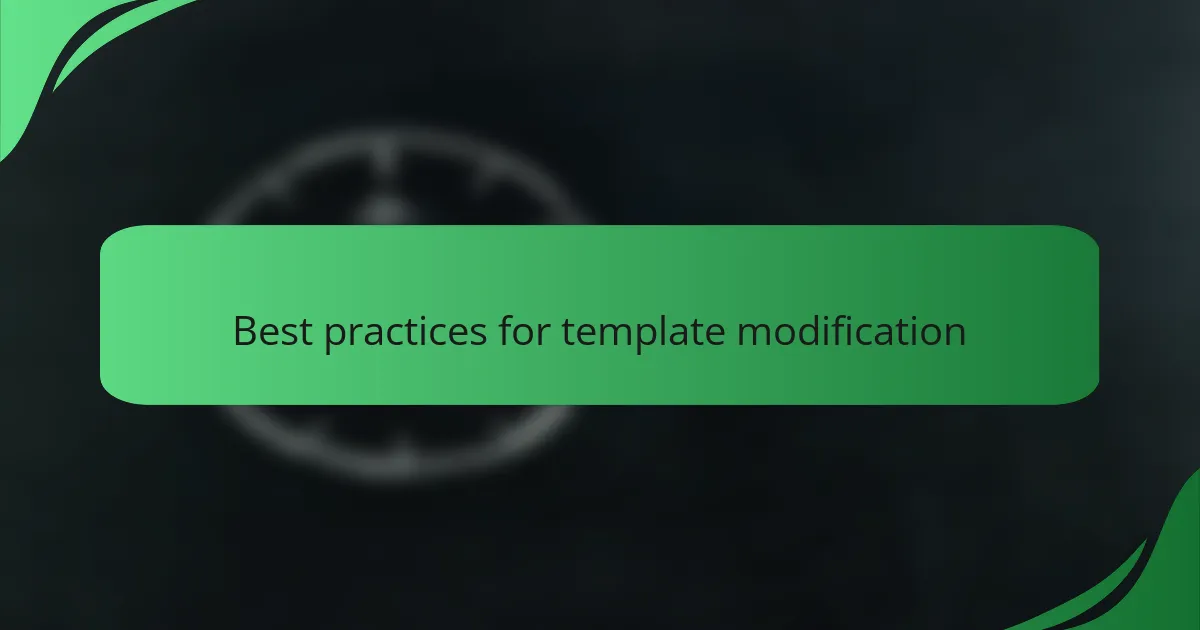
Best practices for template modification
When I first started modifying templates in Adobe Spark, it was easy to get bogged down in excess details. Over time, I learned to prioritize simplicity. This means focusing on key elements that enhance your message without overwhelming your audience. For example, I remember once cluttering a design with too many images and fonts; it ended up distracting from the content rather than showcasing it.
Here are some best practices I’ve found invaluable when modifying templates:
- Keep it simple: Limit colors and fonts to a small palette for cohesive branding.
- Visual hierarchy: Use size and contrast to emphasize key information, guiding viewers through your design.
- Stay on-brand: Ensure your modifications reflect your overall branding for consistency across all materials.
- Text readability: Use legible fonts and appropriate sizes, especially for critical messages.
- Test and iterate: Don’t hesitate to ask for feedback and make adjustments based on what resonates best with your audience.
Embracing these tips transformed how I approach design, making the process much more enjoyable and effective.

Case studies of modified templates
When I look at case studies of modified templates in Adobe Spark, I can’t help but recall a project I did for a non-profit organization. I started with a template that felt a bit bland, but I infused it with vibrant colors that matched their mission. The transformation was remarkable! Not only did the final design grab attention, but it also conveyed a sense of urgency and passion that aligned perfectly with their cause.
Another example comes to mind when I modified a social media post template for a local event. By shifting the layout and adding custom graphics that represented our community, I created an eye-catching post. Why does this matter? Because using elements that resonate with the audience really drives engagement. It’s fascinating how a few thoughtful changes can elevate a template from generic to genuinely impactful.
Then there was the time I redesigned a presentation template for a hobby I’m passionate about—photography. I remember feeling a rush of excitement as I selected images that complemented my message and arranged them in a way that felt dynamic. This experience taught me how crucial it is to adapt templates to reflect personal stories; it not only showcases creativity but also connects with viewers on an emotional level. Isn’t it powerful how our designs can tell stories?

Personal tips for effective designs
When designing, I’ve found that color choice plays a pivotal role in creating the right mood. I remember once working on a project where the color palette was too stark. It took a simple switch to softer hues to convey the warmth I intended. Isn’t it amazing how colors can evoke emotions and change perceptions with just a few adjustments?
Another tip I live by is to embrace white space. Initially, I felt compelled to fill every inch of a design with content, but I quickly learned that leaving space allows the viewer’s eye to breathe. In one instance, creating a minimalist poster made the message shine through, making it more memorable. Have you ever noticed how effective designs often feel spacious and unhurried?
Finally, seeking feedback before finalizing a design is crucial. I often share my drafts with colleagues or friends to gather fresh perspectives. Once, I received constructive criticism on a layout that I thought was perfect. Adjusting based on their insights made the design even stronger. The collaborative aspect of design can truly enhance the overall effectiveness, don’t you think?
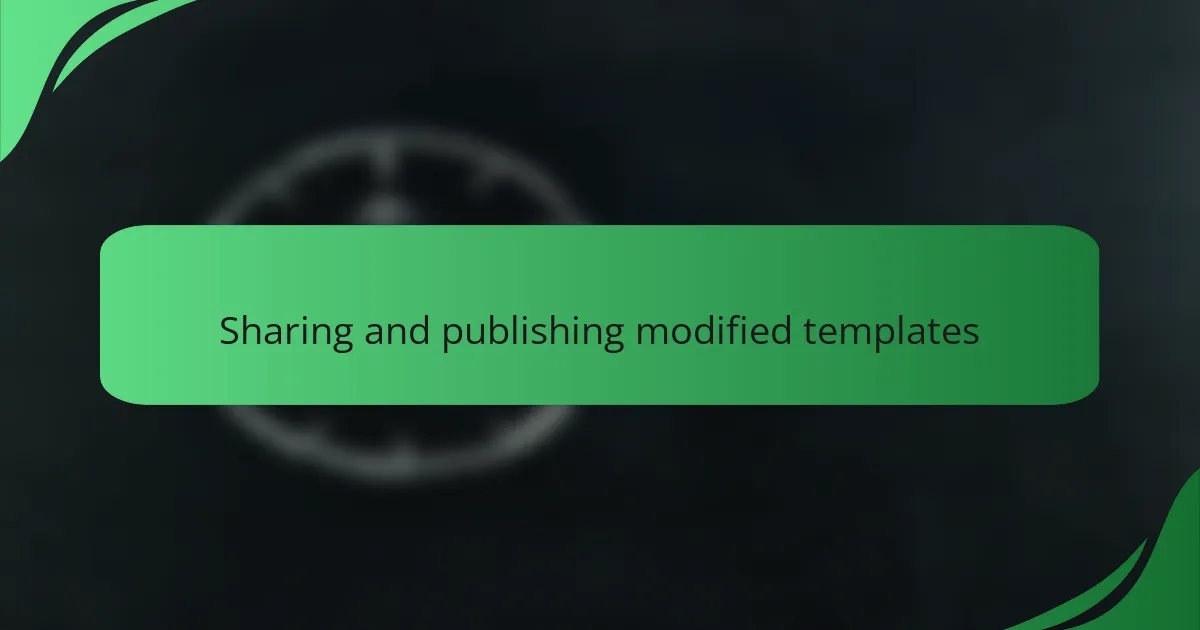
Sharing and publishing modified templates
After you’ve modified your templates in Adobe Spark, sharing them is incredibly straightforward, which is a feature I truly appreciate. A simple click on the “Share” button allows you to choose how you want your audience to engage with your work. I remember the excitement I felt when I first shared a beautifully designed infographic; it felt rewarding to see my ideas come alive and resonate with others.
When it’s time to publish your modified templates, here are some key options to consider:
- Social Media Sharing: Instantly share your designs to platforms like Facebook, Twitter, and Instagram.
- Download Options: Save your creation as a PNG or JPG file for offline use or printing.
- Link Sharing: Generate a shareable link so others can view or edit your template, inviting collaboration.
- Web Embedding: Embed your design directly into a webpage for seamless integration.
Knowing that my designs can be easily shared has really motivated me to refine my skills and create even more engaging visuals.
